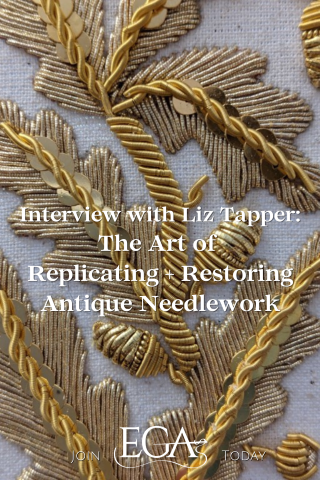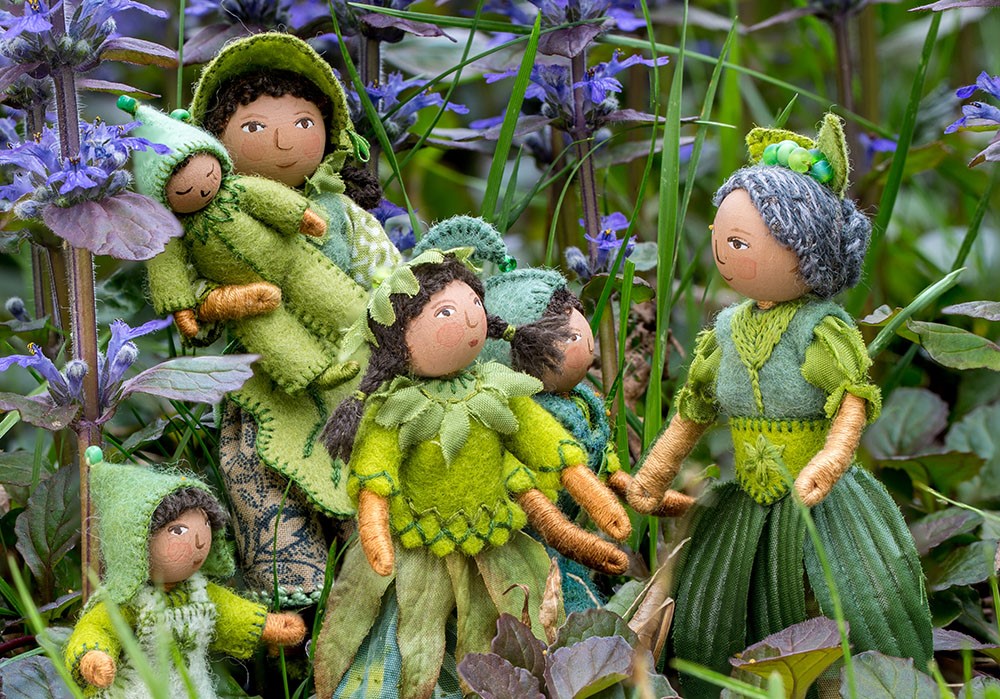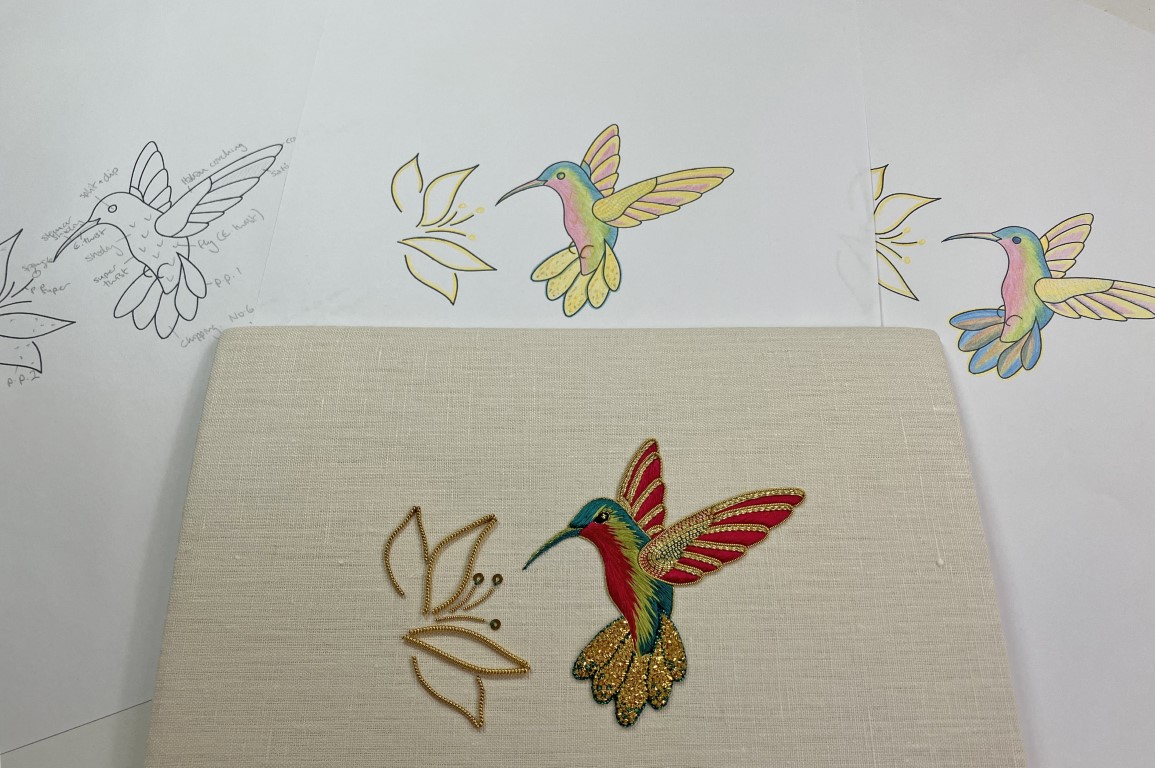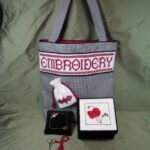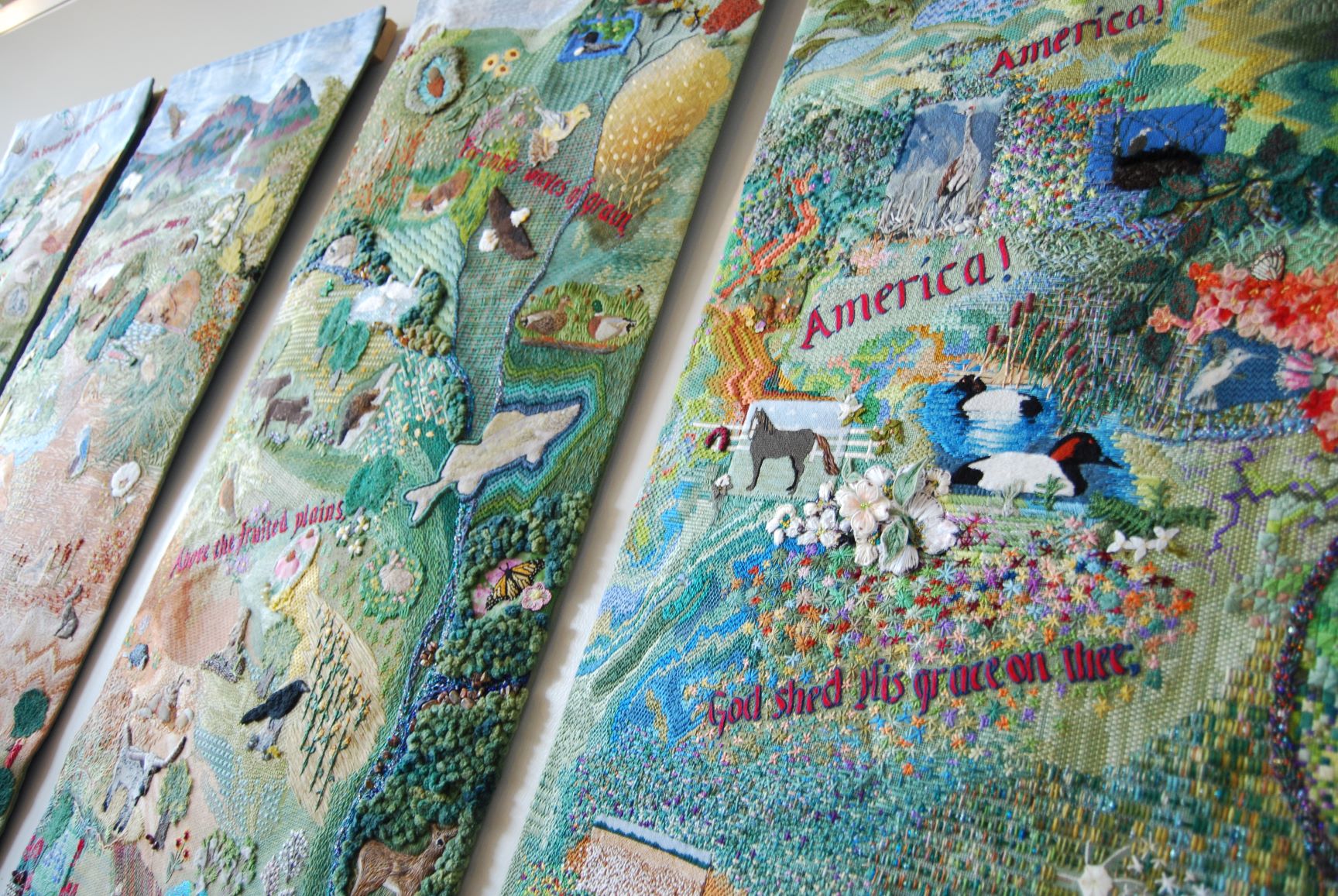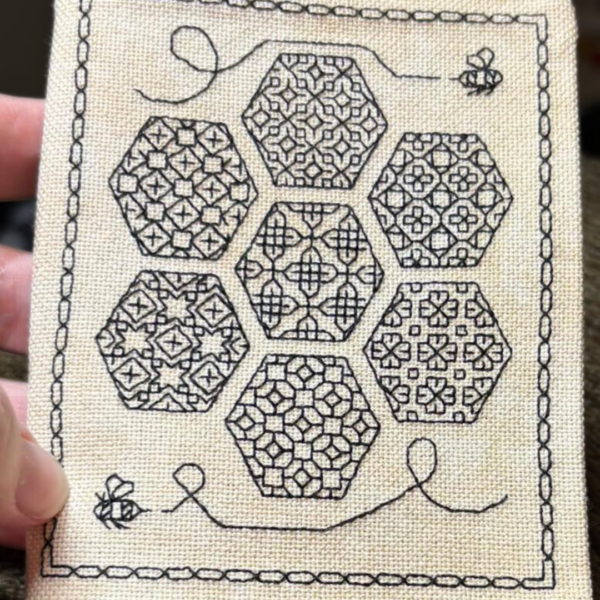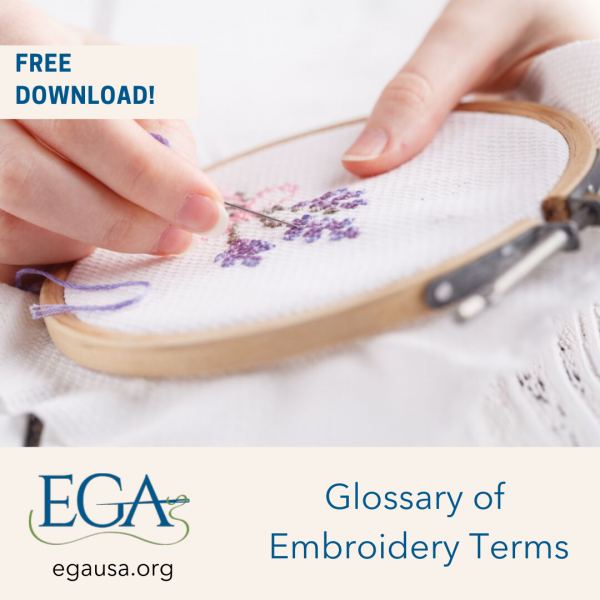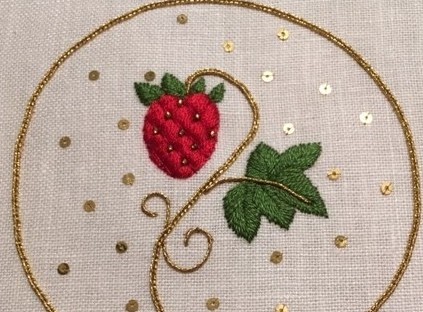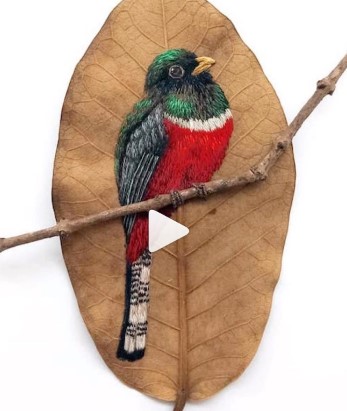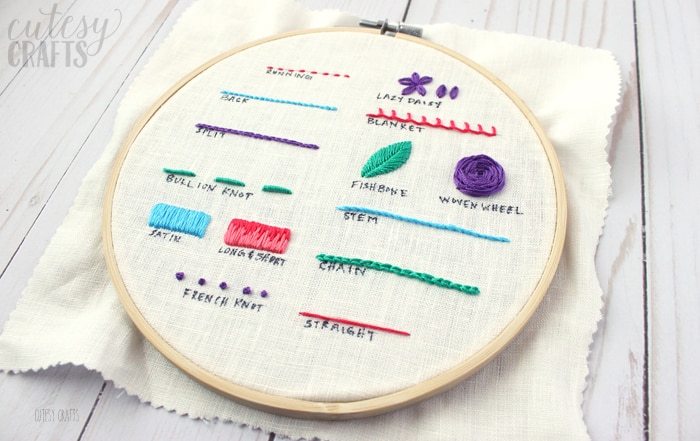We’re incredibly excited for Liz Tapper’s upcoming Virtual Lecture, Measuring Millimeters in a Napoleonic-Era Dress Coat, as it explores the painstaking process of replicating a Napoleonic-era military dress coat with exacting detail. Liz is a multihyphenate needlework talent, with first class qualifications in a wide range of techniques and a background that ranges from designing kits to crafting commissioned embroideries to restoring and reinvigorating antique textiles. We sat down with Liz to learn more about her work ahead of this month’s virtual lecture.
What started your love for embroidery and needlework?
My mum first started me on embroidery with basic stitches on Aida cloth—it grew from there! I took classes outside of school as my school didn’t teach embroidery. I went on an embroidery holiday and I kept on stitching!
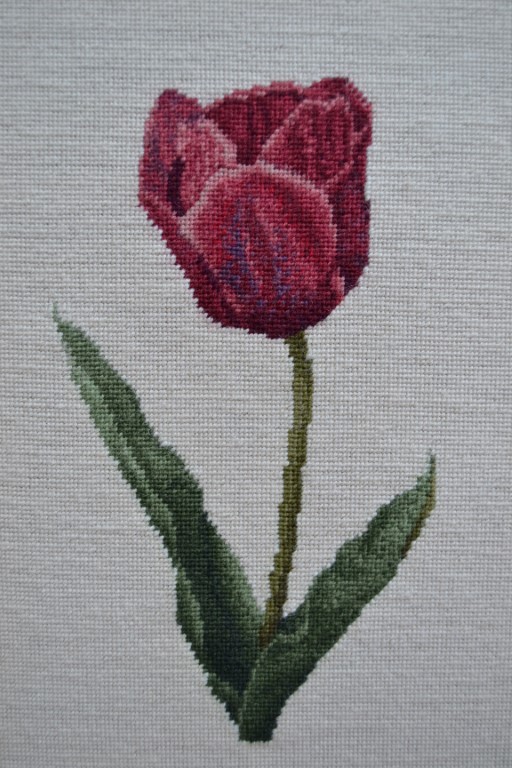
You studied at the Royal School of Needlework, receiving a First Class qualification with training in techniques such as canvas stitches, canvas shading, crewelwork, blackwork, whitework, goldwork, silk shading, and more. Do you have a favorite embroidery technique? Why is it your favorite?
I like some techniques more than others (applique has never been a great love of mine, but I do still use it), but to be honest I like the variety the different techniques give me.
I would get bored if I worked the same technique all the time. However, I do love goldwork because of the beautiful metal threads used, crewelwork due to the variety of stitches, Opus Anglicanum with its lovely silk floss, canvas shading with its detail constrained by the holes in the canvas… It’s very hard to choose.
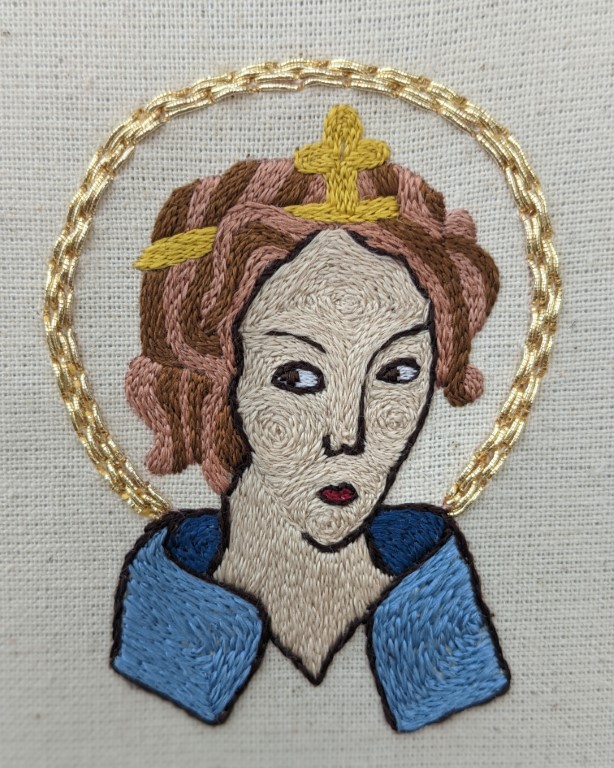
Your Virtual Lecture for EGA, Measuring Millimeters in a Napoleonic-Era Dress Coat, details your experience recreating embroidery for a military dress coat. How did you find yourself in that fascinating creative position?
I was approached by someone who regularly takes part in major historical re-enactments from the Napoleonic period. He had commissioned goldwork coats in the past, but they hadn’t lived up to his expectations. He wanted something unique to him and historically accurate, both in terms of motifs, size of design, threads, and materials used. He asked me to help him achieve this and I just had to say yes!
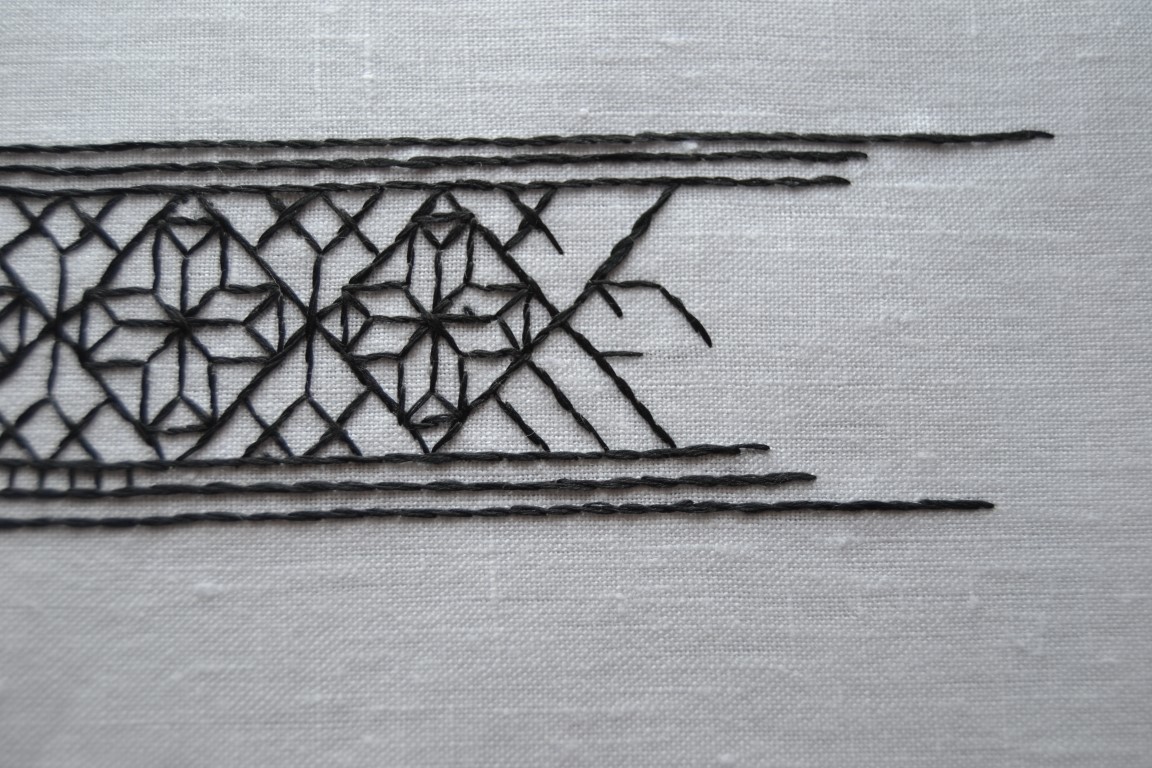
You’ve been commissioned by Harrods, Lulu Guinness, and London Fashion Week, created needlework pieces for television and private commissions, and your work has been featured on the BBC (British Broadcasting Corporation). Do you have a favorite piece created during these varied commission experiences?
From all those commissions, my favorite piece was the blackwork cuffs commissioned for television. These were worked on very fine linen using black silk floss and needed to be historically accurate for the period, this being the reign of King Henry VIII in England, as the TV series was based on the life of Katherine of Aragon, his first wife. Katherine is said to have brought blackwork over with her from Spain. The cuffs were only partly worked so that her ladies-in-waiting could be seen to stitch them.
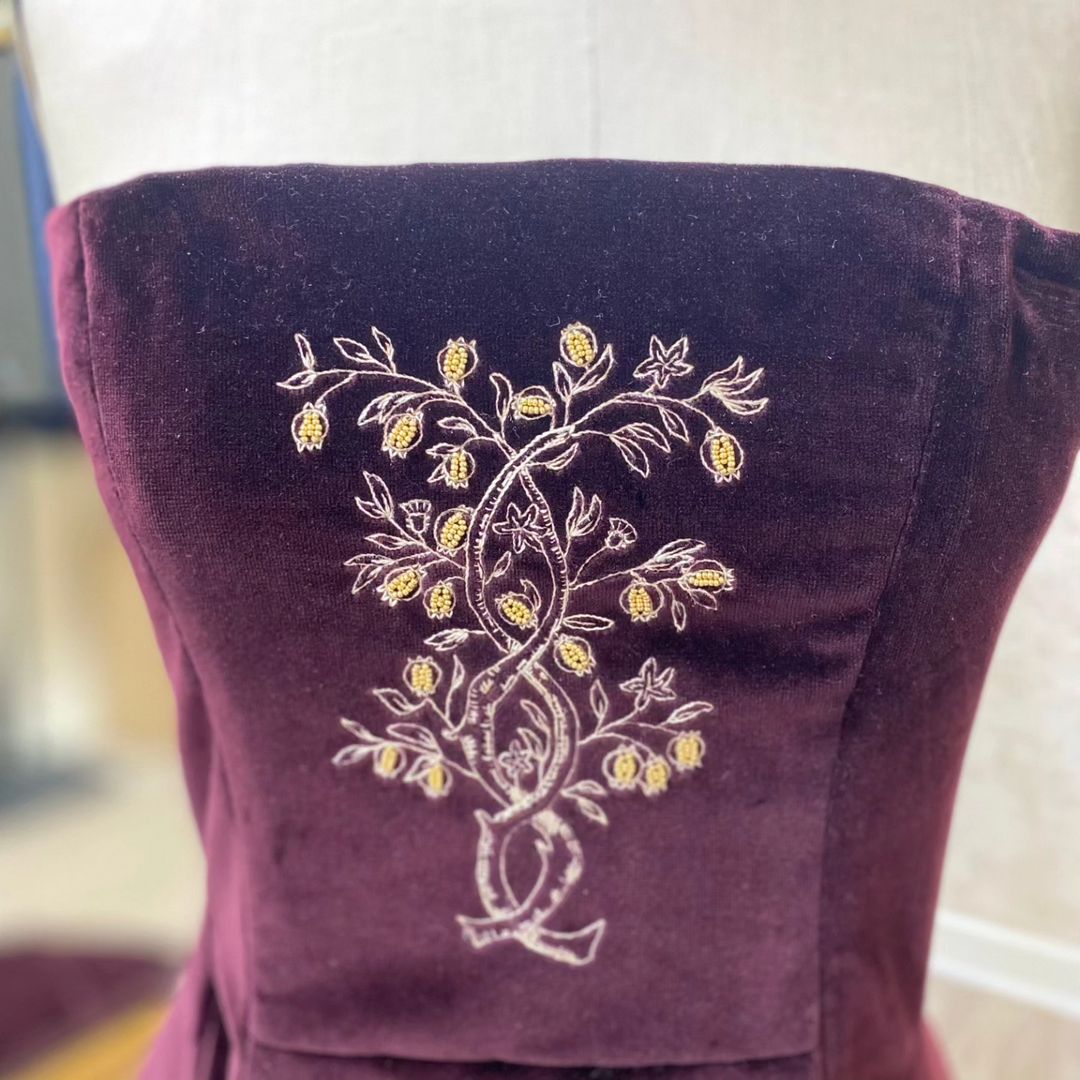
You’re also trained in restoration and conservation of antique textiles and embroideries. What is the most difficult aspect of restoration and conservation? What is something you wish people knew about restoring and conserving antique textiles and embroideries?
Each item has its own particular challenges, depending on material, age, and condition, so because of that, the most difficult aspect is actually estimating how long the commission will take. To work out a cost estimate, the process is broken down into its different parts which helps to work out the time it will take, but this is always very hard to do accurately.
I wish people knew just how long it all takes and can then appreciate the cost involved! It’s never just a case of ‘just popping a few stitches in.’
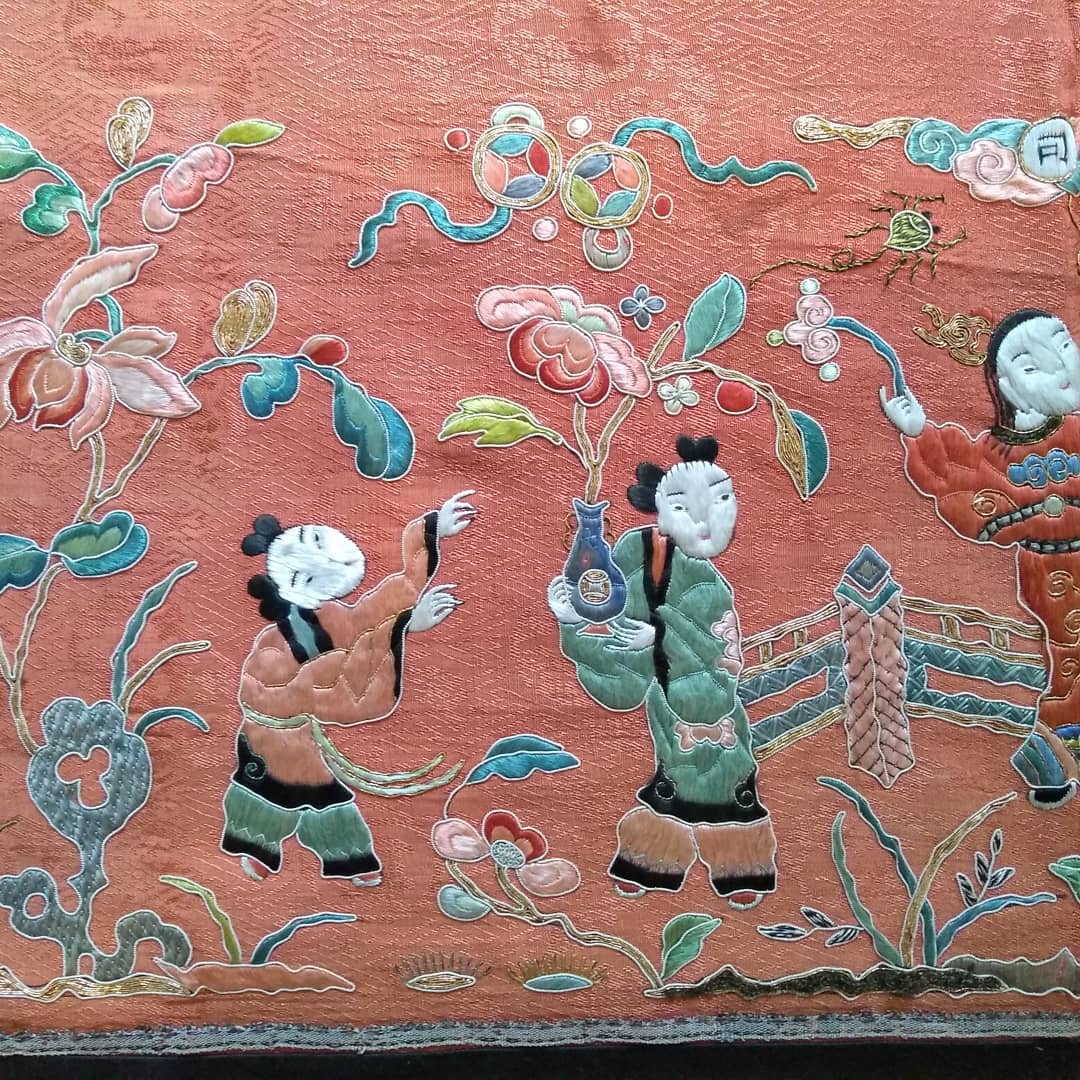
You created Lenham Needlecraft and the Art of the Needle, an online resource with classes, materials, embroidery kits, and more. What inspired you to start the business?
Having an online presence is really important today. It’s all very well stitching away at home hoping to sell or teach what you’re making, but without access to the worldwide audience that the internet provides, it’s very hard to reach interested people. To make a living as a professional embroiderer, you also need more than one string to your bow, so the website helps me promote my classes, talks, commissions, kits, threads, and fabrics.
Where do you find design inspiration? What does your design process look like?
Design inspiration seems to come mainly from either the natural environment around me, or from historical sources. My design process is simplistic in that I take a photo of something I like, then think about which technique would be best suited to it, adapt the image to that technique, look at stitches, shading, padding, etc, choose fabric and threads, transfer the design and then start stitching. It often evolves as I’m stitching, as I change stitches or threads.
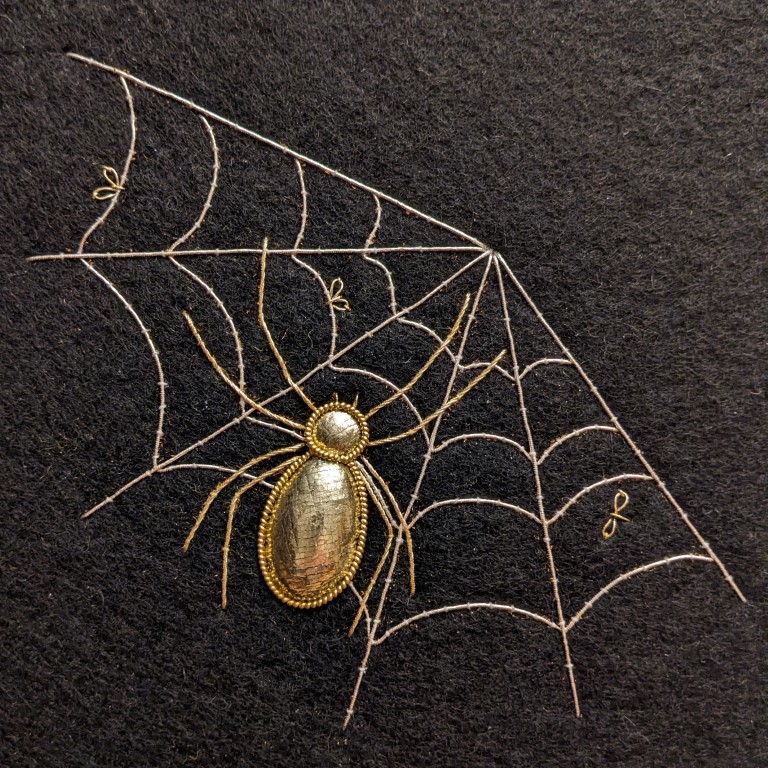
Do you have a daily or weekly needlework practice? What does that look like?
Most embroidery is either through commissions or when designing a new kit, but I don’t stitch regularly as I have orders, teaching, and kit preparation to fit in. I also have two children which means my time is not all my own, and currently, a litter of puppies to tend to!
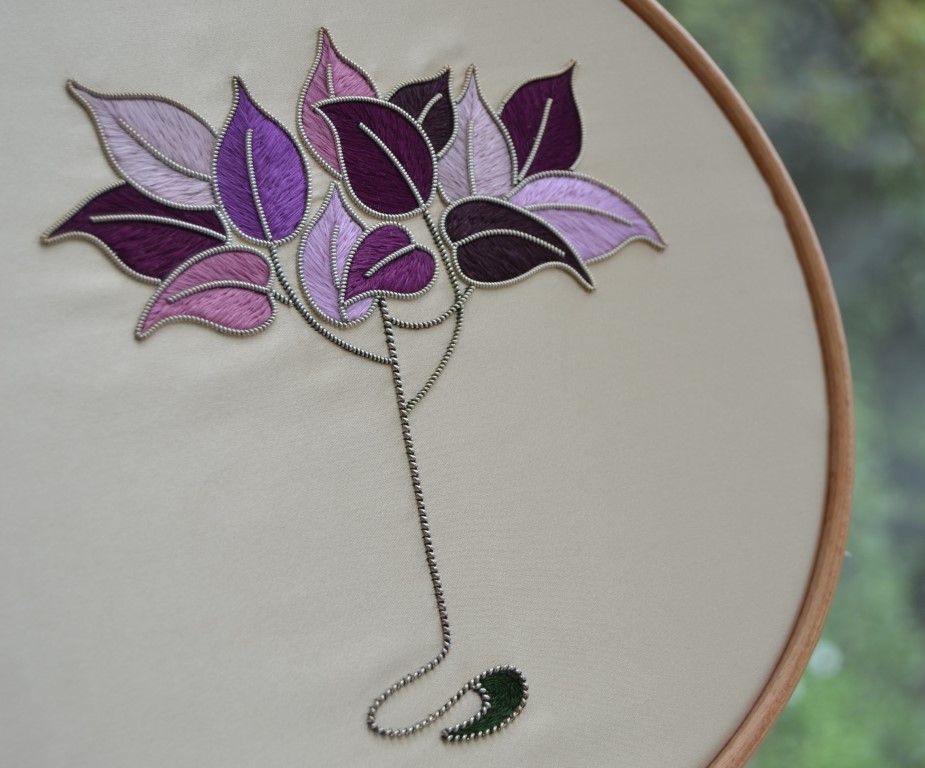
What embroidery or color trends are you drawn to right now?
It’s particular embroidery threads that I’m drawn to at the moment—silk floss. I think in the U.S. it’s called filament silk. This is the untwisted silk thread used for Opus Anglicanum, which I also use in my Art Nouveau-style kits. It’s a beautiful thread to use, with a lovely sheen. I treated myself to the whole range from Devere Silks a couple of years ago. They’ve since introduced some more colors, available as a pack, which is extremely tempting!
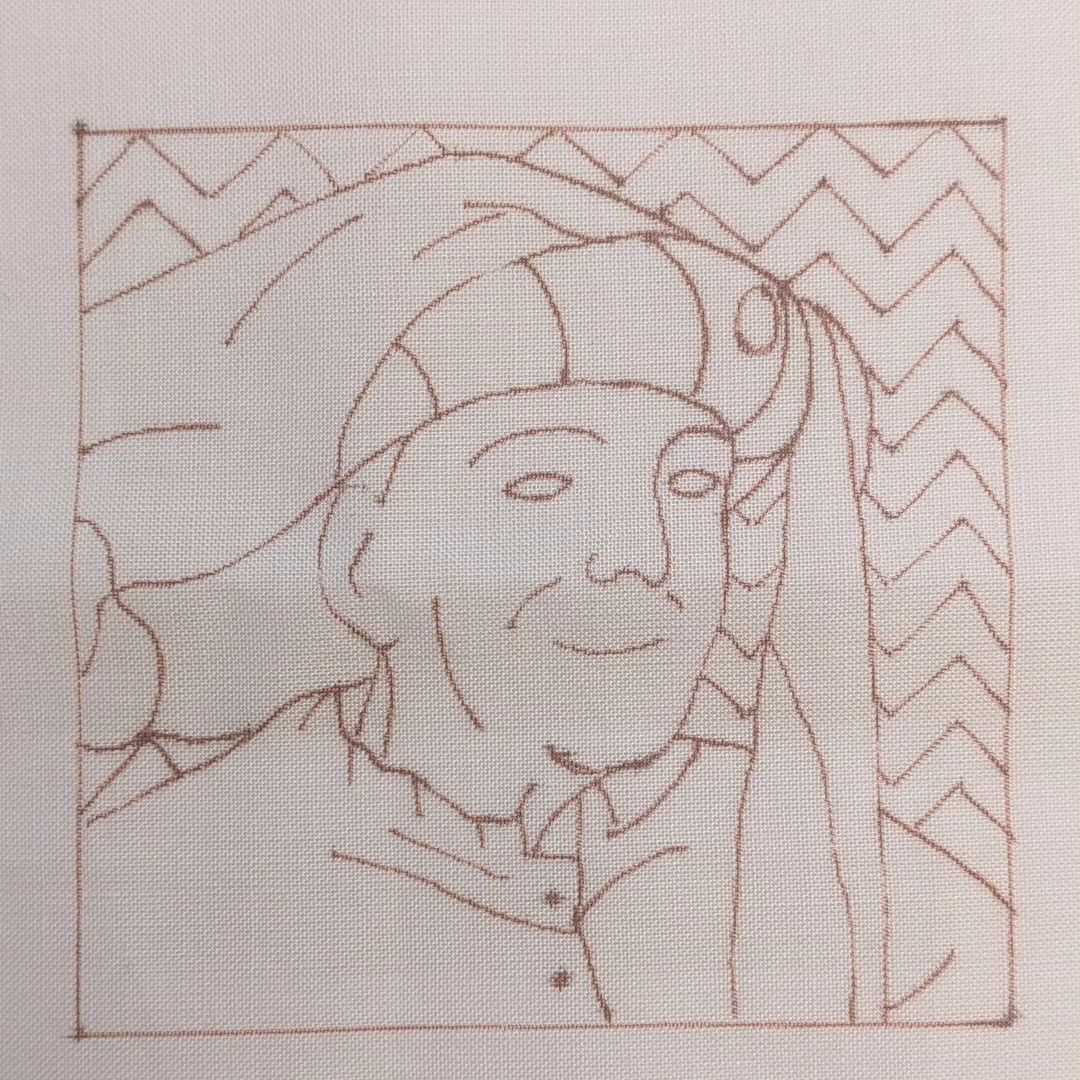
Do you have any fun upcoming or ongoing projects or classes you’d like to share with EGA’s audience?
I recently finished a commission to translate my client’s parents into the Opus Anglicanum technique, which involves split stitch worked in silk floss and underside couching with metal thread. Opus Anglicanum means ‘English Work’ and was at its peak during the 1350s before many of the skilled embroiderers succumbed to the Black Death that swept through Europe. This client has taken two classes with me on this technique and will stitch the two portraits herself. I simplified the photos, transferred the designs, indicated stitch directions, and chose all the threads. It was a lovely and unusual project.
